OpenAI GPT-4o로 실사 이미지를 3D 이모지 스타일로 변환하기
OpenAI GPT-4o의 강력한 이미지 생성 기능을 활용하여 실사 이미지를 귀여운 3D 이모지 스타일로 변환하는 방법을 알아보겠습니다. 이 튜토리얼에서는 토스터 이미지를 예시로 사용하여 단계별로 설명하고, 폴더 내 모든 이미지를 자동으로 변환하는 프로그램도 함께 제공합니다.
변환 결과 미리보기
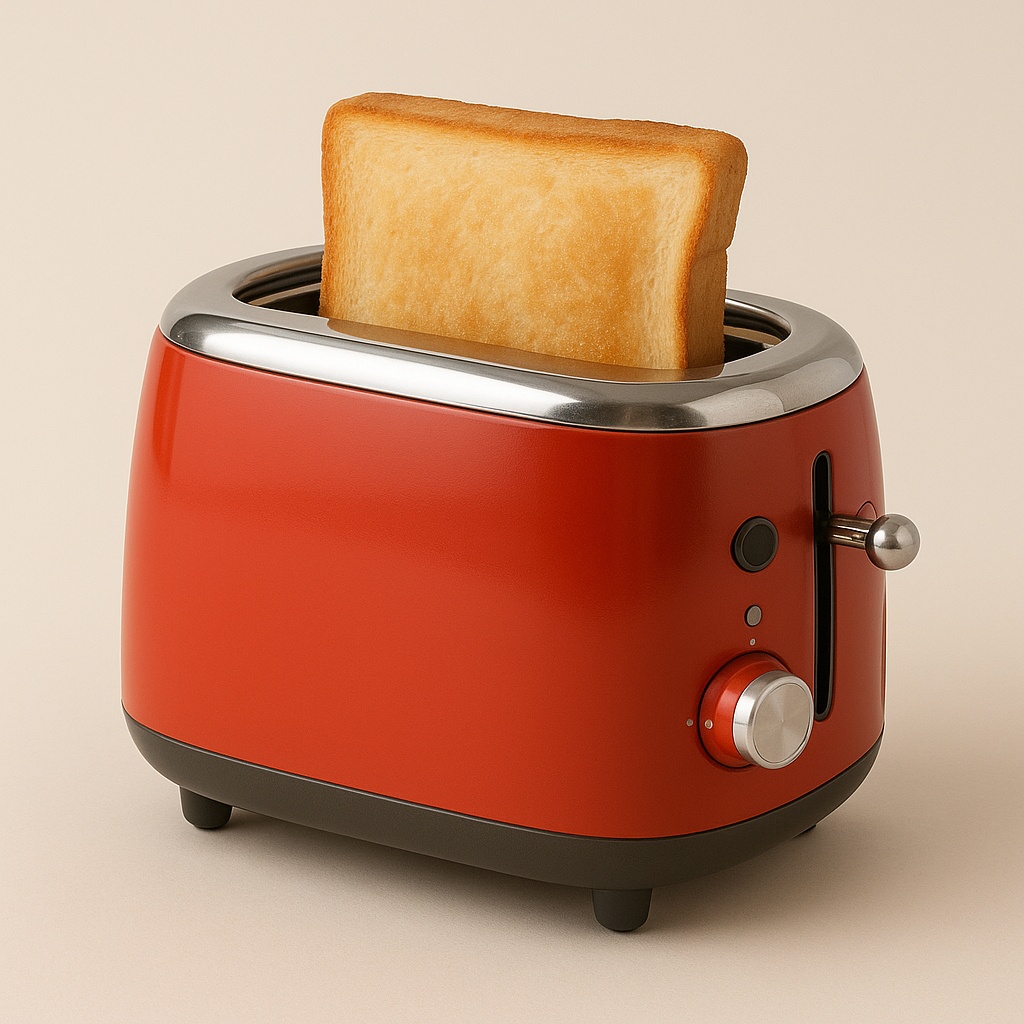 원본 실사 토스터 이미지
원본 실사 토스터 이미지
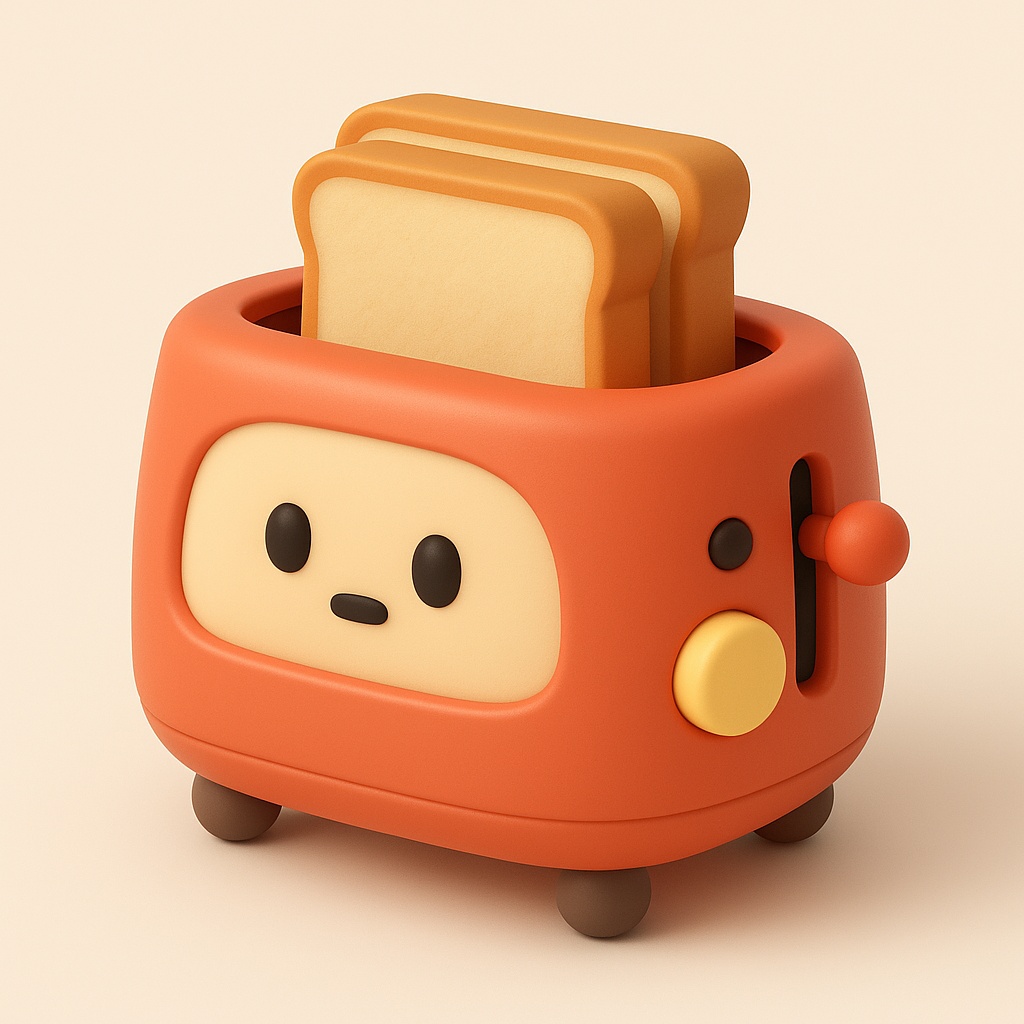 3D 이모지 스타일로 변환된 결과
3D 이모지 스타일로 변환된 결과
GPT-4o 이미지 변환 프롬프트
OpenAI GPT-4o에서 실사 이미지를 3D 이모지 스타일로 변환하려면 다음 프롬프트를 사용하세요:
Apply the following JSON-based texture to the provided image.
{
"styleAesthetic": {
"title": "Minimal Emoji-style 3D Car",
"overallVibe": "Cute and playful toy-like character with smooth, rounded geometry and minimal surface detail",
"viewAngle": "Slight top-down front-facing perspective",
"renderingStyle": "Soft 3D rendering with smooth plastic-like finishes and soft shadows",
"colorPalette": {
"baseTones": [
"Warm red-orange",
"Matte black",
"Cream beige"
],
"accents": [
"Pale yellow button emblem",
"Soft gray for lighting and tires"
],
"gradientStyle": "Barely noticeable gradients used just to define volume and surface transitions"
},
"lightingAndShadows": {
"type": "Top-front studio light",
"shadowStyle": "Very soft ambient shadows under and behind the object",
"highlightIntensity": 0.15
},
"characterFeatures": {
"facialExpressions": "Minimal and neutral with a subtle dot mouth and wide-set eyes",
"eyeStyle": "Large black circular eyes with no outline or reflection",
"mouthStyle": "Small oval or dash, centered and low on the windshield"
},
"objectSurfaces": {
"type": "Uniformly smooth and slightly matte plastic surface",
"textureDetail": "None — surfaces are entirely textureless"
},
"linework": {
"thickness": "None — contours are defined only through geometry and shading",
"color": "N/A"
},
"moodKeywords": [
"Minimal",
"Toy-like",
"Friendly",
"Emoji-inspired",
"Rounded 3D"
]
}
}
![]() 3D 이모지 스타일로 변환된 결과
3D 이모지 스타일로 변환된 결과
OpenAI GPT-4o에서 실사 이미지를 blue icons으로 변환하려면 다음 프롬프트를 사용하세요:
Apply the following JSON-based texture to the provided image.
{
"styleAesthetic": {
"title": "Bold Flat Abstract Portrait Icon",
"overallVibe": "Playful and expressive portrait rendered with clean, geometric flat shapes and strong contrast",
"viewAngle": "Centered straight-on view",
"renderingStyle": "2-D flat illustration using a single vivid color on a pure-white background; no gradients or shading",
"colorPalette": {
"baseTones": [
"Pure blue (100 % saturation)"
],
"accents": [
"White negative space (background)"
],
"gradientStyle": "None — strictly flat fills"
},
"lightingAndShadows": {
"type": "None — design is fully flat",
"shadowStyle": "None",
"highlightIntensity": 0.0
},
"characterFeatures": {
"facialExpressions": "Neutral yet engaging, conveyed through minimal stylized lines",
"eyeStyle": "Simple curved or dot shapes with no outline or highlights",
"mouthStyle": "Single curved stroke (or dash) for the mouth; optional stylized mustache stroke if needed"
},
"objectSurfaces": {
"type": "Completely flat vector shapes",
"textureDetail": "None — solid fills only"
},
"linework": {
"thickness": "Consistent medium-bold stroke",
"color": "Same single vivid color as the fills"
},
"moodKeywords": [
"Minimal",
"Bold",
"Graphic",
"Playful",
"Iconic"
]
}
}
 Pop-Up Paper Cutout 스타일로 변환된 결과
Pop-Up Paper Cutout 스타일로 변환된 결과
OpenAI GPT-4o에서 실사 이미지를 Pop-Up Paper Cutout으로 변환하려면 다음 프롬프트를 사용하세요:
Apply the following JSON-based texture to the provided image.
{
"styleAesthetic": {
"title": "Children’s Pop-Up Paper Cutout Illustration",
"overallVibe": "Joyful, handcrafted scene made of layered cardstock with playful, childlike characters on a theatrical blank stage",
"viewAngle": "Frontal view with a slight top-down tilt to reveal the depth of each folded paper layer",
"renderingStyle": "3D paper-cut look featuring crisp fold lines, subtle paper-edge shadows, and bright flat fills",
"colorPalette": {
"baseTones": [
"Cherry red",
"Sunny yellow",
"Sky blue",
"Grass green"
],
"accents": [
"Soft pastel pink",
"Bright orange highlights",
"Warm cream highlights"
],
"gradientStyle": "Solid flat colors—volume suggested only by real paper shadow gradients near folds"
},
"lightingAndShadows": {
"type": "Soft top-front studio lighting",
"shadowStyle": "Crisp layered shadows cast by each cutout and fold, enhancing depth",
"highlightIntensity": 0.2
},
"characterFeatures": {
"facialExpressions": "Simple dot eyes and curved smiles conveying joy",
"eyeStyle": "Small black circular eyes without reflections",
"mouthStyle": "Wide curved paper-cut smile, centrally placed"
},
"objectSurfaces": {
"type": "Flat matte cardstock surface",
"textureDetail": "Very subtle paper fiber visible on close inspection"
},
"linework": {
"thickness": "None—edges are defined by the physical cutouts themselves",
"color": "N/A"
},
"moodKeywords": [
"Playful",
"Handcrafted",
"Pop-up book",
"Layered paper",
"Joyful"
]
}
}
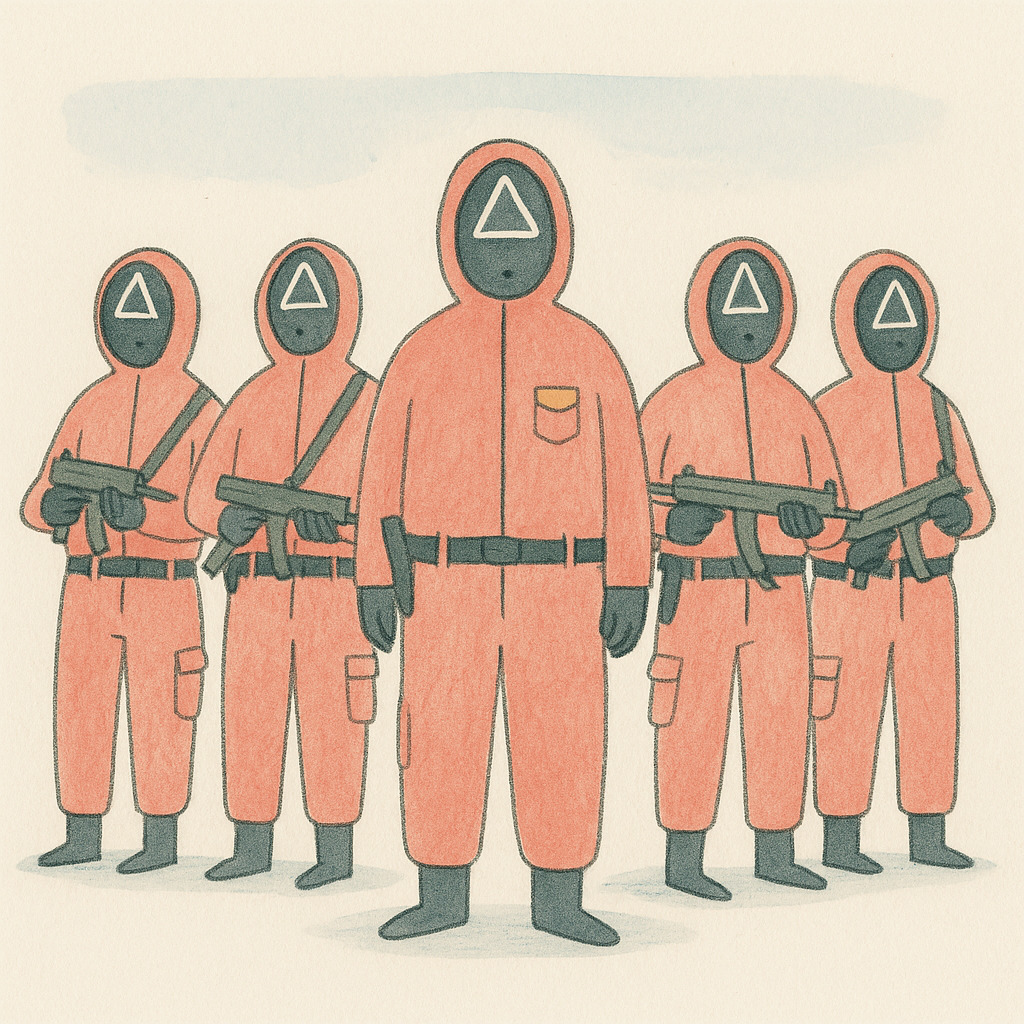 일러스트레이션 스타일로 변환된 결과
일러스트레이션 스타일로 변환된 결과
OpenAI GPT-4o에서 실사 이미지를 일러스트레이션으로 변환하려면 다음 프롬프트를 사용하세요:
Apply the following JSON-based texture to the provided image.
{
"styleAesthetic": {
"title": "Modern Minimalist Style",
"overallVibe": "Gentle, symbolic scene with abundant white space and slightly awkward, childlike figures drawn in a loose hand",
"viewAngle": "Straight-on, eye-level view that lets negative space breathe around the subjects",
"renderingStyle": "Flat shapes with rough pencil outlines and soft hand-painted textures that leave visible brush or crayon strokes",
"colorPalette": {
"baseTones": [
"Warm off-white (background)",
"Muted teal",
"Mustard yellow",
"Soft coral"
],
"accents": [
"Charcoal gray linework",
"Pale sky-blue wash"
],
"gradientStyle": "Very light watercolor bleeds—most areas remain solid with subtle texture variations"
},
"lightingAndShadows": {
"type": "Ambient natural light with no strong direction",
"shadowStyle": "Minimal; faint gray pencil hatching or a light wash beneath characters",
"highlightIntensity": 0.05
},
"characterFeatures": {
"facialExpressions": "Tiny dot eyes and a small line mouth conveying quiet curiosity",
"eyeStyle": "Uneven dots, slightly asymmetrical for charm",
"mouthStyle": "Short horizontal dash or gentle curve, placed low on the face"
},
"objectSurfaces": {
"type": "Matte paper with visible grain and occasional watercolor pooling",
"textureDetail": "Subtle pencil pressure variations and brush edges visible"
},
"linework": {
"thickness": "Varies from hairline to 2 px, wobbling slightly to feel hand-drawn",
"color": "Dark charcoal gray, never pure black"
},
"moodKeywords": [
"Minimal",
"Contemplative",
"Gentle",
"Hand-painted",
"Symbolic"
]
}
}
![]() 일러스트레이션 스타일로 변환된 결과
일러스트레이션 스타일로 변환된 결과
OpenAI GPT-4o에서 실사 이미지를 pixel patch 변환하려면 다음 프롬프트를 사용하세요:
Apply the following JSON-based texture to the provided image.
{
"styleAesthetic": {
"title": "Pixel-Patch Quilt Fantasy",
"overallVibe": "Whimsical and handmade, as if stitched together by a dreamer using pixels and fabric scraps—playful, nostalgic, and surreal.",
"viewAngle": "Flat 2D side view, like a stitched game screen or folk art tapestry.",
"renderingStyle": "Pixelated textile-quilt hybrid; visuals look hand-sewn from small colored fabric squares or digital 8-bit tiles with faux-thread borders.",
"colorPalette": {
"baseTones": [
"Sunrise Peach #FFD4A3 // sky & warm glow",
"Ocean Denim #5BA9C7 // water blocks",
"Patch Sand #F4E1B9 // stitched foam & beach",
"Quilted Lilac #D8C2F0 // decorative highlights"
],
"accents": [
"Teacup Brass #D4A05A // ship elements",
"Crimson Thread #C04D5A // patch seams & contrast stitch",
"Clover Green #88C57F // foliage or flags"
],
"gradientStyle": "None; colors remain flat and discrete—depth implied through contrast and overlapping ‘patches’."
},
"lightingAndShadows": {
"type": "Implied sunrise via color blocks (no realistic light modeling).",
"shadowStyle": "Flat drop shadows or stitched edge outlines to suggest elevation layers.",
"highlightIntensity": 0.00
},
"characterFeatures": {
"facialExpressions": "Blocky eyes, stitched smiles—charming and simplified like toys or sprites.",
"eyeStyle": "2×2 or 3×3 black pixel blocks or dark thread knots.",
"mouthStyle": "Single stitched line or pink patch arc."
},
"objectSurfaces": {
"type": "Woven cloth or pixel grid textures with faux-stitch overlay.",
"textureDetail": "Visible ‘fabric weave’ or retro dithering patterns where appropriate."
},
"linework": {
"thickness": "1 px pixel-width or dashed seams in contrasting thread color.",
"color": "Crimson Thread (#C04D5A) or soft brown tones."
},
"composition": {
"aspectRatio": "Horizontal 3:2 aspect—panoramic scene with layered elements stitched across the canvas.",
"focalStrategy": "Hero object (e.g., teacup pirate ship) centered, surrounded by stitched patterns or symbolic blocks (e.g., waves, clouds)."
},
"moodKeywords": [
"Patchwork",
"Pixel Art",
"Surreal",
"Folk-style",
"Playful"
]
}
}
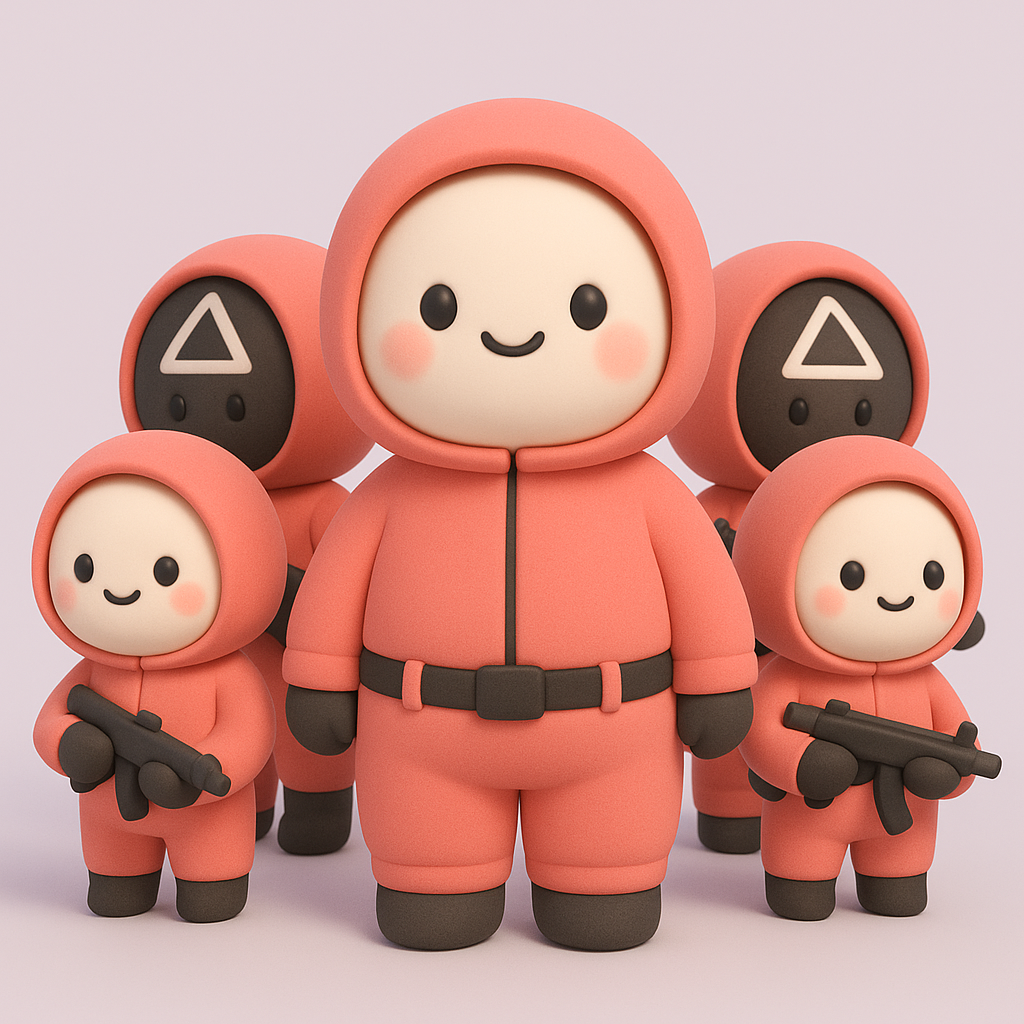 일러스트레이션 스타일로 변환된 결과
일러스트레이션 스타일로 변환된 결과
OpenAI GPT-4o에서 실사 이미지를 animal minimalism 변환하려면 다음 프롬프트를 사용하세요:
Apply the following JSON-based texture to the provided image.
{
"styleAesthetic": {
"title": "Animal Minimalism",
"overallVibe": "Soft, cute and calm—rounded cartoon animal rendered with plenty of open space.",
"viewAngle": "Front-facing or ¾ perspective for friendly eye contact.",
"renderingStyle": "Cinema4D + Redshift quality; smooth, matte surfaces with subtle AO shading—no hard edges or outlines.",
"colorPalette": {
"baseTones": [
"Cream White #FFF7F1 // main body",
"Powder Pink #FADCE0 // inner ears & cheeks",
"Mint Mist #DFF5EF // optional body accent",
"Lilac Breeze #E9E6FA // optional background tint"
],
"accents": [
"Glossy Black #000000 // eyes",
"Soft Blush #FFB7B7 // rosy cheek highlight"
],
"gradientStyle": "Mostly flat pastel fills; depth created via soft ambient occlusion rather than color gradients."
},
"lightingAndShadows": {
"type": "Omnidirectional diffused studio lighting.",
"shadowStyle": "Barely-there contact shadow, feather-soft edges.",
"highlightIntensity": 0.10
},
"characterFeatures": {
"facialExpressions": "Wide glossy dot eyes and a tiny smile conveying gentle curiosity.",
"eyeStyle": "Spherical black eyes with a subtle specular highlight.",
"mouthStyle": "Small curved line or no mouth for extra simplicity."
},
"objectSurfaces": {
"type": "Matte plush fabric-like finish.",
"textureDetail": "Subtle velvety grain visible only at close range."
},
"linework": {
"thickness": "None—forms are defined by geometry and shading, not outlines.",
"color": "N/A"
},
"moodKeywords": [
"Cute",
"Pastel",
"Plush",
"Minimalist",
"Calm"
],
"exportSettings": {
"background": "Transparent PNG or alpha-enabled EXR.",
"variation": "Single final render (no alternates)."
}
}
}
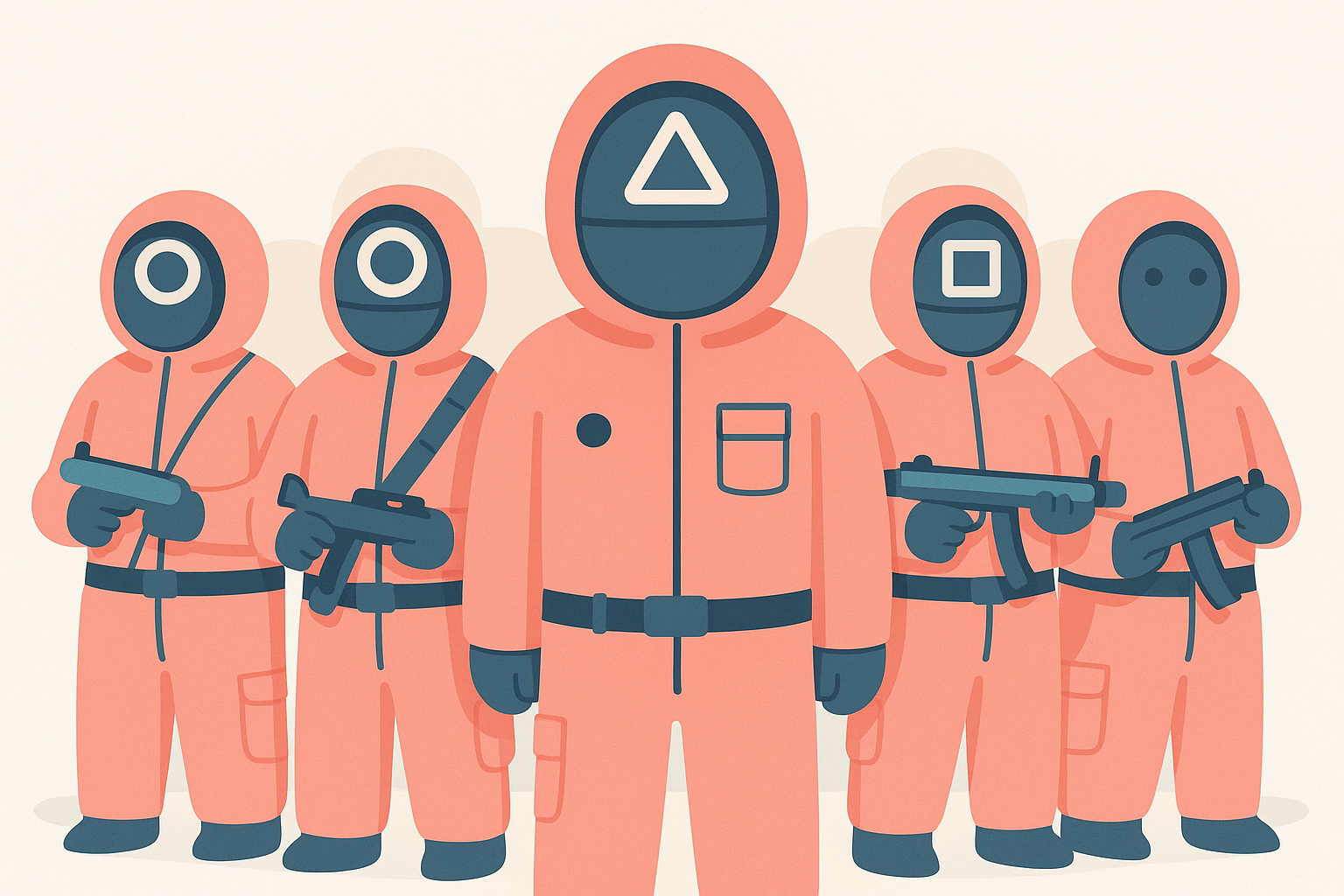 일러스트레이션 스타일로 변환된 결과
일러스트레이션 스타일로 변환된 결과
OpenAI GPT-4o에서 실사 이미지를 Nimbus Minimal Modernism 변환하려면 다음 프롬프트를 사용하세요:
Apply the following JSON-based texture to the provided image.
{
"styleAesthetic": {
"title": "Nimbus Minimal Modernism",
"overallVibe": "A cloud-inspired visual language that feels both futuristic and friendly: generous whitespace, soft curves, and a balanced grid.",
"viewAngle": "Front view or 20° top-down oblique—symbolizing the perspective of looking down from above the clouds.",
"renderingStyle": "Flat design with a light grain texture. Lines are minimized; softly rounded shadow blocks provide depth.",
"colorPalette": {
"baseTones": [
"Nimbus White #F9FBFD // cloud-like background",
"Skyway Blue #4FA4F7 // primary actions & links",
"Stratus Gray #CCD5E0 // secondary text & lines",
"Deep Navy #0E1B36 // headers & body text"
],
"accents": [
"Circuit Teal #13C5CA // interactive highlights",
"Sunrise Coral #FF8663 // alerts & emphasis"
],
"gradientStyle": "90 % solid color + a very subtle horizontal grain gradient (2 % opacity) for an analog touch"
},
"lightingAndShadows": {
"type": "Soft diffused light, 45° from above",
"shadowStyle": "Primary: 0 2 4 rgba(0,0,0,0.06) / Secondary: 0 6 12 rgba(0,0,0,0.04) – indicates layer depth",
"highlightIntensity": 0.08
},
"characterFeatures": {
"facialExpressions": "Dot eyes (●●) with a small rounded mouth, symbolizing curiosity and collaboration",
"eyeStyle": "Slightly asymmetric placement for warmth",
"mouthStyle": "Small U-shape or straight line"
},
"objectSurfaces": {
"type": "Matte paper texture or low-saturation plastic finish",
"textureDetail": "200 dpi grain or light noise under 2 %"
},
"linework": {
"thickness": "Variable 1 px–1.5 px with round caps",
"color": "Stratus Gray (#CCD5E0)"
},
"typography": {
"kr": "Pretendard 16/24 – Bold, SemiBold, Regular",
"en": "Inter 15/24 – Medium, Regular",
"code": "JetBrains Mono 14/22"
},
"iconography": {
"grid": "16 px grid with 1.5 px stroke weight",
"cornerRadius": "30 % radius to echo cloud shapes",
"styleNote": "Optical alignment: position slightly above the true center"
},
"moodKeywords": [
"Cloud-native",
"Future-friendly",
"Friendly Minimal",
"Open-source",
"Scalable"
]
}
}
수동 변환 과정
단계 1: OpenAI ChatGPT 접속
- ChatGPT에 접속합니다.
- GPT-4o 모델이 선택되어 있는지 확인합니다.
단계 2: 이미지 업로드
- 변환하고 싶은 실사 이미지를 채팅창에 드래그 앤 드롭합니다.
- 위의 JSON 기반 프롬프트를 함께 입력합니다.
단계 3: 결과 확인 및 다운로드
- GPT-4o가 생성한 3D 스타일 이미지를 확인합니다.
- 만족스러운 결과가 나올 때까지 프롬프트를 조정할 수 있습니다.
- 최종 이미지를 다운로드합니다.
자동 변환 프로그램
폴더 내 모든 이미지를 자동으로 변환하는 Python 프로그램을 제공합니다. 이 프로그램은 OpenAI API를 사용하여 배치 처리를 수행합니다.
필요한 패키지 설치
pip install openai pillow python-dotenv
환경 설정
.env 파일을 생성하고 OpenAI API 키를 설정합니다:
OPENAI_API_KEY=your_openai_api_key_here
프로그램 코드
다음 Python 스크립트를 사용하여 폴더 내 모든 이미지를 자동으로 변환할 수 있습니다:
import os
import base64
from pathlib import Path
from openai import OpenAI
from PIL import Image
import io
import time
from dotenv import load_dotenv
# 환경 변수 로드
load_dotenv()
class ImageStyleConverter:
def __init__(self):
self.client = OpenAI(api_key=os.getenv('OPENAI_API_KEY'))
self.style_prompt = """Apply the following JSON-based texture to the provided image.
{
"styleAesthetic": {
"title": "Minimal Emoji-style 3D Object",
"overallVibe": "Cute and playful toy-like character with smooth, rounded geometry and minimal surface detail",
"viewAngle": "Slight top-down front-facing perspective",
"renderingStyle": "Soft 3D rendering with smooth plastic-like finishes and soft shadows",
"colorPalette": {
"baseTones": [
"Warm red-orange",
"Matte black",
"Cream beige"
],
"accents": [
"Pale yellow button emblem",
"Soft gray for lighting and details"
],
"gradientStyle": "Barely noticeable gradients used just to define volume and surface transitions"
},
"lightingAndShadows": {
"type": "Top-front studio light",
"shadowStyle": "Very soft ambient shadows under and behind the object",
"highlightIntensity": 0.15
},
"characterFeatures": {
"facialExpressions": "Minimal and neutral with a subtle dot mouth and wide-set eyes",
"eyeStyle": "Large black circular eyes with no outline or reflection",
"mouthStyle": "Small oval or dash, centered appropriately"
},
"objectSurfaces": {
"type": "Uniformly smooth and slightly matte plastic surface",
"textureDetail": "None — surfaces are entirely textureless"
},
"linework": {
"thickness": "None — contours are defined only through geometry and shading",
"color": "N/A"
},
"moodKeywords": [
"Minimal",
"Toy-like",
"Friendly",
"Emoji-inspired",
"Rounded 3D"
]
}
}"""
def encode_image(self, image_path):
"""이미지를 base64로 인코딩"""
with open(image_path, "rb") as image_file:
return base64.b64encode(image_file.read()).decode('utf-8')
def convert_image(self, image_path, output_path):
"""단일 이미지를 3D 스타일로 변환"""
try:
print(f"변환 중: {image_path}")
# 이미지 인코딩
base64_image = self.encode_image(image_path)
# OpenAI API 호출
response = self.client.chat.completions.create(
model="gpt-4o",
messages=[
{
"role": "user",
"content": [
{
"type": "text",
"text": self.style_prompt
},
{
"type": "image_url",
"image_url": {
"url": f"data:image/jpeg;base64,{base64_image}"
}
}
]
}
],
max_tokens=300
)
# DALL-E 3로 이미지 생성
dalle_response = self.client.images.generate(
model="dall-e-3",
prompt=f"{self.style_prompt}\n\nCreate a 3D emoji-style version of the uploaded image.",
size="1024x1024",
quality="standard",
n=1,
)
# 생성된 이미지 URL에서 다운로드
import requests
image_url = dalle_response.data[0].url
img_response = requests.get(image_url)
if img_response.status_code == 200:
with open(output_path, 'wb') as f:
f.write(img_response.content)
print(f"변환 완료: {output_path}")
return True
else:
print(f"이미지 다운로드 실패: {image_path}")
return False
except Exception as e:
print(f"변환 실패 {image_path}: {str(e)}")
return False
def convert_folder(self, input_folder, output_folder, supported_formats=None):
"""폴더 내 모든 이미지를 변환"""
if supported_formats is None:
supported_formats = ['.jpg', '.jpeg', '.png', '.bmp', '.tiff']
input_path = Path(input_folder)
output_path = Path(output_folder)
# 출력 폴더 생성
output_path.mkdir(parents=True, exist_ok=True)
# 지원되는 이미지 파일 찾기
image_files = []
for ext in supported_formats:
image_files.extend(input_path.glob(f"*{ext}"))
image_files.extend(input_path.glob(f"*{ext.upper()}"))
if not image_files:
print(f"지원되는 이미지 파일이 {input_folder}에서 발견되지 않았습니다.")
return
print(f"총 {len(image_files)}개의 이미지를 변환합니다.")
success_count = 0
for i, image_file in enumerate(image_files, 1):
print(f"\n진행률: {i}/{len(image_files)}")
# 출력 파일명 생성 (3d- 접두사 추가)
output_filename = f"3d-{image_file.name}"
output_file_path = output_path / output_filename
# 이미지 변환
if self.convert_image(image_file, output_file_path):
success_count += 1
# API 호출 제한을 위한 대기
time.sleep(2)
print(f"\n변환 완료! {success_count}/{len(image_files)}개 성공")
def main():
"""메인 함수"""
converter = ImageStyleConverter()
# 사용법 예시
input_folder = "assets/images/posts/tutorial" # 입력 폴더 경로
output_folder = "assets/images/posts/tutorial/converted" # 출력 폴더 경로
print("OpenAI GPT-4o 이미지 스타일 변환기")
print("=" * 50)
# 폴더 내 모든 이미지 변환
converter.convert_folder(input_folder, output_folder)
if __name__ == "__main__":
main()
프로그램 사용법
1. 환경 설정
# 필요한 패키지 설치
pip install openai pillow python-dotenv requests
# .env 파일에 API 키 설정
echo "OPENAI_API_KEY=your_api_key_here" > .env
2. 프로그램 실행
python image_converter.py
3. 커스터마이징
프로그램을 사용자의 요구에 맞게 수정할 수 있습니다:
- 입력/출력 폴더 변경:
main()함수에서 경로 수정 - 지원 파일 형식 추가:
supported_formats리스트 수정 - 스타일 프롬프트 변경:
style_prompt변수 수정 - 출력 파일명 규칙 변경:
output_filename생성 로직 수정
주의사항
API 사용량 및 비용
- OpenAI API는 사용량에 따라 과금됩니다.
- DALL-E 3 이미지 생성은 이미지당 약 $0.04의 비용이 발생합니다.
- 대량 변환 시 비용을 미리 계산해보세요.
품질 최적화 팁
- 고해상도 입력: 더 좋은 결과를 위해 고해상도 이미지를 사용하세요.
- 명확한 객체: 배경이 단순하고 주 객체가 명확한 이미지가 좋습니다.
- 프롬프트 조정: 특정 스타일이 필요하다면 JSON 프롬프트를 수정하세요.
에러 처리
프로그램에는 기본적인 에러 처리가 포함되어 있습니다:
- API 호출 실패 시 재시도 로직
- 지원되지 않는 파일 형식 필터링
- 네트워크 오류 처리
결론
OpenAI GPT-4o의 이미지 변환 기능을 활용하면 실사 이미지를 매력적인 3D 이모지 스타일로 쉽게 변환할 수 있습니다. 제공된 자동화 프로그램을 사용하면 대량의 이미지도 효율적으로 처리할 수 있어, 디자인 작업이나 콘텐츠 제작에 큰 도움이 될 것입니다.
이 튜토리얼이 도움이 되셨다면, 다른 AI 도구 활용법도 함께 살펴보시기 바랍니다!